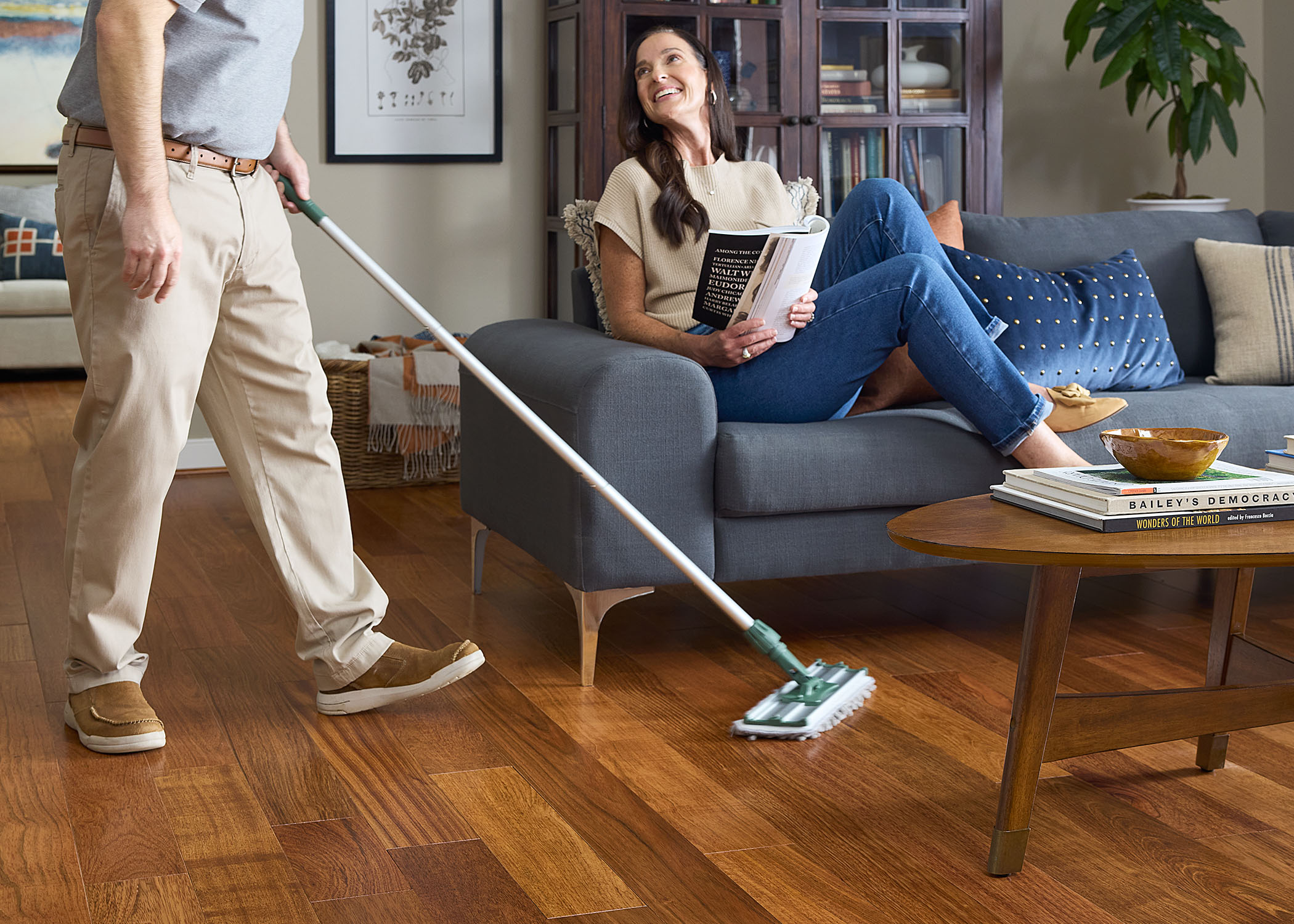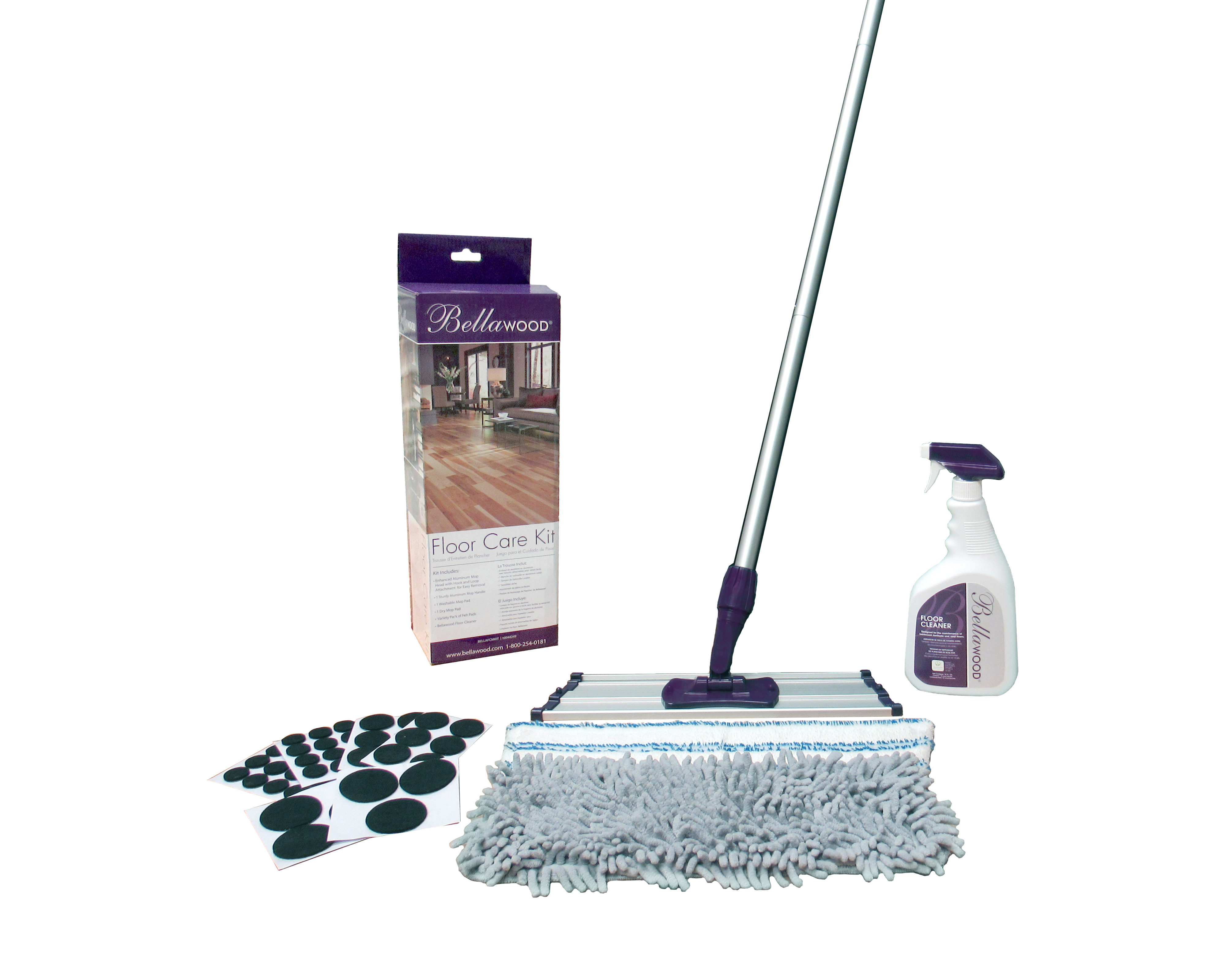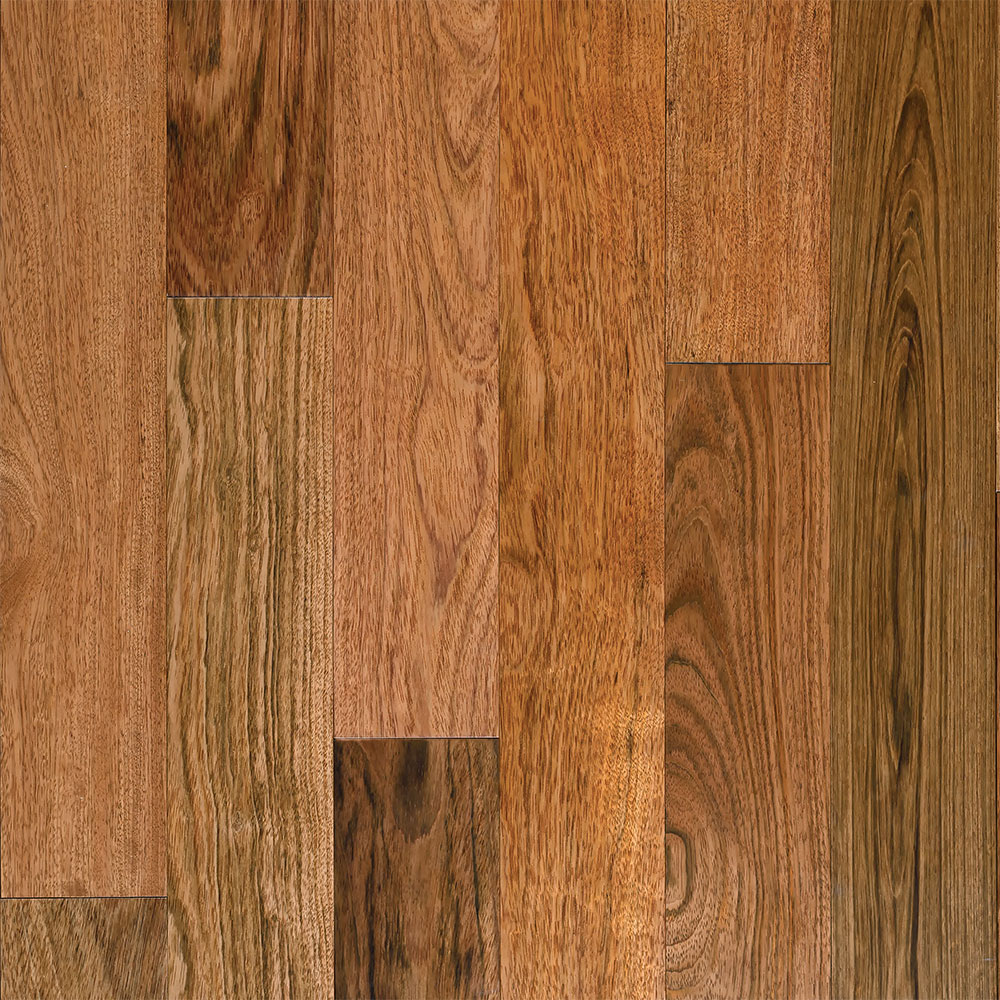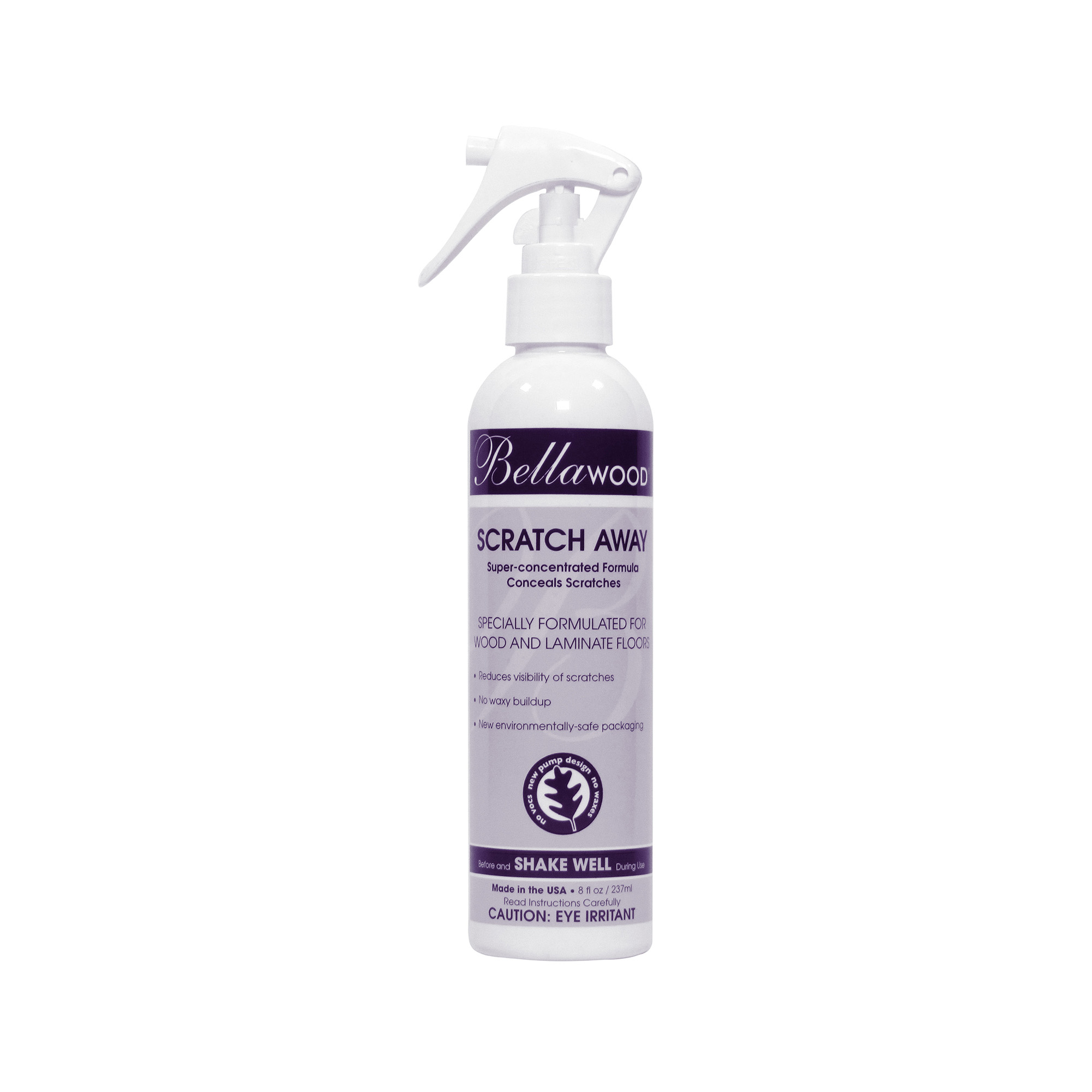- Home
- Education
- Floor Care and Maintenance
- Floor Care: Best Hardwood Floor Cleaning Tips and Tricks
Floor Care: Best Hardwood Floor Cleaning Tips and Tricks
Hardwood flooring is a worthy investment, but it needs to be maintained. Here are some quick FAQs about cleaning and maintaining hardwood floors.
Can I Use a Steam Cleaner on Wood Floors?
Since steam cleaners expose hardwood to two of its worst elements, heat, and water, you can not use them on your floors. Hot steam damages the finish of hardwood, causing it to discolor or bubble, flake, and peel off.
It can also damage the structure of a board as the steam mop forces steam between the boards and into the underlayment below. The steam then cools and turns back into water, which the underside parts of the boards absorb, potentially resulting in damage to the boards.
When moisture gets between the boards through joins and hairline cracks, there’s the risk of it turning into mold or mildew. This can shorten the lifespan of your flooring. It can also negatively affect your family’s health.
That steam damages hardwood is true for both solid and engineered flooring. However, it can be worse for engineered hardwood, as the steam can damage the adhesives that bind the layers in the board together.
It’s especially noteworthy that using a steam mop can void your warranty. Many manufacturers explicitly warn against the use of steam cleaning. You can find more details about a product’s warranty in its WIC guidelines.
How Do I Clean Engineered Hardwood Floors?
Engineered hardwood flooring cleans similarly to solid hardwood flooring. It is important to sweep, vacuum, or dust regularly, and address messes as they occur.
The veneer, or hardwood part of an engineered wood board, is susceptible to harsh chemicals and acidic cleaners. Avoid soaps, ammonia, vinegar, and wax, as these erode the protective layer of the veneer. Also, avoid melamine sponges and steel wool, as these cause irreparable damage. Instead, LL Flooring recommends Bellawood Floor Cleaner for protection and shine.

An important note is to not use cleaning products made for cleaning vinyl, tile, or other flooring. These cleaners will likely damage your engineered hardwood.
Can You Use All-Purpose Cleaner on Wood Floors?
While you can use all-purpose cleaners on hardwood floors, it’s not recommended. Over time, the cleaner can degrade the protective seal, and on unsealed wood, it causes staining or discoloration.
What Should You Not Use to Clean Hardwood Floors?
Floors cope with the crumbs, dirt, spills, and messes from everyday living. That’s why it’s important to take care of them. This means not just knowing what helps to keep it clean but also what not to use to avoid long-term damage.
- Vinegar-based products: Many online sources recommend using vinegar as a natural alternative cleaner. This is especially common in DIY cleaning solutions. This is poor advice, as the acid in vinegar slowly erodes your hardwood floor’s protective layer.
- Ammonia-based products: While an effective cleaner, ammonia is not good for hardwood floors. It, too, wears away the protective layer and damages the flooring underneath.
- Soapy water: Soap and water are go-to cleaners for many of us. But for wood flooring, soap can make your floor dull and slippery and show shoe and foot marks more easily. Don't use wet, damp, or string mops on your wood flooring.
- Glass cleaning products: The benefit of glass cleaners is the abrasive chemicals that help glass shine. But these abrasive chemicals are exactly why glass cleaning products are harmful to your flooring, as they scratch your floor’s protective layer.
- Bleach: This is another common and powerful cleaner, and another one to not use on your flooring because of the damage it causes. Bleach removes the color from clothing, so you can imagine what it does to your floors.
- Vacuums with the beater bar turned on: A beater bar uses tough bristles like nylon to beat dust and dirt out of carpets, and this can scratch wood flooring. Vacuums are safe for wood floors if the beater bar is turned off.
Whichever cleaning product you use, test it in a discreet place. It can be in the corner of a room or inside a closet, wherever any potential damage caused by the cleaner won’t be noticeable.
How Can I Reduce Streaks on Hardwood Floors?
Finding streaks on your hardwood floor after cleaning them is frustrating. Thankfully, you can take a few simple steps to leave your floor shining and streak-free.
Find the right mop for your floor. Don't use wet or damp mops and use only approved cleaners.
Mop in 3-foot by 3-foot sections. This is so you’re not left with large patches drying and streaking while mopping on the other side of the room.
Rinse your mop often or change the dry mop pad that touches the floor. This will stop you from pushing dirt around the floor.
Use light back-and-forth motions. If there’s a patch of stubborn dirt, use firm pressure and scrub quickly but briefly.
Why Has My Hardwood Floor Changed Color?
As your floor ages, color change or “patina” can occur. Whether finished or unfinished, all wood changes color over time due to oxidation and exposure to UV light. Some species darken in color over time, while others tend to lighten. This is part of a natural development of your floors character and beauty. There is no known set value for "color fastness" of a species, so contractors and or customers should be aware of this normal condition. Certain species, including American Cherry, Brazilian Koa, Brazilian Cherry, and many imported species, have this tendency to change in color. Some color change is to be expected for all species and in some cases the change can be quite dramatic as the character of the floor develops. This “Patina” process although normal, can be minimized by limiting exposure to direct sunlight or accelerated by exposure. Periodically moving furniture and rugs will help to equalize overall exposure to UV light. If possible avoid completely covering floors with rugs for the first six months.

How Should I Clean Textured or Distressed Hardwood?
Textured / Distressed
It is recommended to clean a floor in the same general direction as the texture, not across it. Pay special attention to deeper distressed area and remove any excess cleaning agent. A sticky, hazy or greasy looking surface can occur if the floor was cleaned the wrong way such as; using too much cleaner or the wrong cleaners like detergents or soaps.
Polished/ High Gloss
Dried watermarks are often more visible on polished textures. Therefore, for best results, immediately wipe the floor dry after damp cleaning.
Beveled-edges
Clean along or with the beveled-edges, not across them. Floors with beveled edges can act as a pocket where moisture can collect. When cleaning make sure no water or cleaner has collected or puddled in the bevel.
Caring for Your Hardwood Floor
The answers above mirror what the experts say about how to care for and maintain your solid or engineered hardwood floors. It takes a little time and effort, but finding the right cleaning supplies and setting a regular cleaning schedule will help your floor maintain its longevity and healthy shine.
Would you like to try out the products mentioned in this article? Add 4 Free Samples to your cart and have them shipped right to you, no credit card needed.
Follow LLStyle on Instagram & Pinterest. Post or share photos and tag @LLFlooringOfficial.
Learn about home improvement and design with fun and informative videos. Subscribe to the LL Flooring YouTube Channel. Leave comments or ideas that helped you and join the community.
In this short video, contractor and home improvement TV host Josh Temple explains the best way to clean your hardwood floors.





